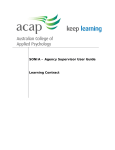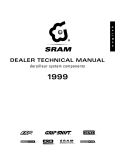Download Joule Solar Collector Heating Systems
Transcript
CI/SfB 41 Rq2 IRISH AGRÉMENT BOARD CERTIFICATE NO. 10/0353 Joule Energy Solutions Kylemore Parkwest, Ballyermot, Dublin 10 Tel: +353 (0) 1 623 7080 Fax: +353 (0) 1 626 9337 Email: [email protected] Web: www.joulesolutions.ie Joule Solar Collector Heating Systems Le système solaire de chauffage Solarheizungssystem NSAI Agrément (Irish Agrément Board) is designated by Government to issue European Technical Approvals. NSAI Agrément Certificates establish proof that the certified products are ‘proper materials’ suitable for their intended use under Irish site conditions, and in accordance with the Building Regulations 1997 to 2009. PRODUCT DESCRIPTION: This Certificate relates to the following Joule Solar Collector Heating Systems: • Joule Acapella Solar Collector Heating System • Joule Navitas Solar Collector Heating System • Joule VisSolis Solar Collector Heating System Each system is comprised of a solar collector a cylinder, pump station, control panel, expansion vessel, connections, sloping roof kit, antifreeze, user & installation manual and labelling packs. The Acapella solar collector consists of an insulated manifold and a row of evacuated solar tubes for on-roof applications. The Navitas solar collector consisting of aluminium framed flat plate array for on-roof applications. The VisSolis solar collector consisting of timber frame flat plate array, with powder coated aluminium flashing for in-roof applications. This Certificate certifies compliance with the requirements of the Building Regulations 1997 to 2009. USE: The Acapella, Navitas and VisSolis solar collectors are suitable for application on new and existing buildings with a roof pitch of between 25º -70º. The collectors must be fixed to a roof that meets the requirements of I.S. ICP 2:2002 Code of practice for slating and tiling. The Joule Solar Collector Heating Systems should be installed by competent persons with suitable training and practical experience of the systems, and who have been approved by Joule and NSAI Agrément to install the system. Readers are advised to check that this Certificate has not been withdrawn or superseded by a later issue by contacting NSAI Agrément, NSAI, Santry, Dublin 9 or online at http://www.nsai.ie/modules/certificates/uploads/pdf/IAB100353.pdf MARKETING, DESIGN AND MANUFACTURE: The Joule Acapella Solar collectors are designed, and manufactured by Sunrain, China and the Joule Navitas and VisSolis Solar Collectors are designed and manufactured by Gasokol, Austria. The Collector Heating Systems are designed, marketed and distributed by Joule Energy Solutions Kylemore Parkwest, Ballyermot, Dublin 10 Tel: +353 (0) 1 623 7080 Fax: +353 (0) 1 626 9337 Email: [email protected] Web: www.joulesolutions.ie Certificate No. 10/0353/ Joule Solar Collector Heating Systems Part One / Certification 1.1 ASSESSMENT In the opinion of NSAI Agrément, the Joule Solar Collector Heating Systems, if used in accordance with this Certificate can meet the requirements of the Building Regulations 1997 to 2009, as indicated in Section 1.2 of this Agrément Certificate. 1.2 BUILDING REGULATIONS 1997 to 2009 REQUIREMENTS: Part D – Materials and Workmanship D3 – Proper Materials The Joule Solar Collector Heating Systems, as certified in this Certificate, are comprised of ‘proper materials’ fit for their intended use (see Part 4 of this Certificate). D1 – Materials & Workmanship The Joule Solar Collector Heating Systems, as certified in this Certificate, meet the requirements for workmanship. Part A - Structure A1 – Loading The Joule Solar Collector Heating Systems, once appropriately designed and installed in accordance with this Certificate, have adequate strength and stability to meet the requirements of this Regulation (see Part 3 of this Certificate). 1 Part B – Fire Safety B4 – External Fire Spread The Joule Solar Collector Heating Systems will not affect the external fire rating of the roof structure on which they are installed (see Part 4 of this Certificate). Part C – Site Preparation and Resistance to Moisture C4 – Resistance to Weather and Ground Moisture The Joule Solar Collector Heating Systems, once appropriately designed and installed in accordance with this Certificate, will not affect a roof’s resistance to the ingress of moisture (see Part 4 of this Certificate). Part L – Conservation of Fuel and Energy L1 – Conservation of Fuel and Energy The Joule Solar Collector Heating Systems can be designed to meet the minimum level of energy provision from renewable technologies stated in this Regulation, i.e. 10kWh/m2/annum contributing to energy use for domestic hot water heating. Certificate No. 10/0353 / Joule Solar Collector Heating Systems Part Two / Technical Specification and Control Data 2 2.1 PRODUCT DESCRIPTION This Certificate relates to the following Joule Solar Collector Solar Heating Systems: • • • Joule Acapella Solar Collector Heating System Joule Navitas Solar Collector Heating System Joule VisSolis Solar Collector Heating System Each system is comprised of a solar collector a cylinder, pump station, control panel, expansion vessel, connections, sloping roof kit, antifreeze, user & installation manual and labelling packs. The Acapella solar collector consists of an insulated manifold and a row of evacuated solar tubes for on-roof applications. The Navitas solar collector consisting of aluminium framed flat plate array for on-roof applications. The VisSolis solar collector consisting of timber frame flat plate array, with powder coated aluminium flashing for on-roof applications. Figure 1: Joule Acapella Heat Pipe Collector Figure 1 – 21 show the main elements of the Joule Solar Collector Solar Heating Systems. Table 1 shows the Joule Solar Collector range and technical specifications. 2.1.2 Navitas Solar Collector Navitas Solar Collectors are flat plate collectors consisting of a coated copper absorber housed in an insulated aluminium frame. The energy absorbed by the absorber causes the solar fluid to be heated. The solar system solution is pumped through the absorber where it receives energy and is then transferred to the solar coil integrated in the solar storage vessel. The Joule Solar Collector range have been tested to EN 12975-2:2006 Thermal solar systems and components – Solar collectors – Test methods. Up to a maximum of 6 flat panel collectors can be joined together in series with a flow rate of 15 litres/minute. 2.1.1 Joule Acapella Solar Collector The Joule Acapella Solar Collectors consist of an array of evacuated ‘Sydney Tubes’ which house the heat pipes and absorbers. Evaporator fluid is contained within the heat pipe. The energy absorbed by the absorber causes the fluid to change from a fluid state to a vapour state and the vapour rises to the condenser bulb. See Figure 1. The condenser is connected directly into the manifold via a dry pocket. Within the manifold, the solar system solution is passed across the dry pocket that houses the condenser. The condenser releases the latent heat of evaporation to the solar system solution and condenses. The condensate returns to the heat pipe and the cycle is repeated. 2.1.3 VisSolis Solar Collector VisSolis Solar Collectors are flat plate collectors consisting of a coated copper absorber housed in an insulated timber frame. The panel is flashed into the surrounding roof covering by either slate or tile aluminium flashing kit. The energy absorbed by the absorber causes the solar fluid to be heated. The solar system solution is pumped through the absorber where it receives energy and is then transferred to the solar coil integrated in the solar storage vessel. Up to a maximum of 6 flat panel collectors can be joined together in series with a flow rate of 15 litres/minute. Due to the dry connection, the Joule Acapella Solar tubes can be replaced without the need of draining down the solar system. Up to a maximum of 4 x 30 tube collectors can be joined together in series with a flow rate of 12 litres/minute. Table 1 shows the Joule Acapella Solar Collector technical specifications. Certificate No. 10/0353 / Joule Solar Collector Heating Systems Figure 2: Joule Navitas On-Roof Collector Figure 3: Joule VisSolis In-Roof Collector 2.2 MANUFACTURE 2.2.1 The Joule Acapella Solar Collectors are manufactured by Jiangsu Sunrain Solar Energy Co. Ltd. in China. The management systems of Sunrain have been assessed and registered as meeting the requirements of ISO9001:2000. Under conditions set out by the Solar Keymark Certification, Sunrain Solar Energy are registered and continuously monitored by Fraunhofer ISE, Germany. Manufacture consists of fabrication and assembly of the heat pipes, absorbers, manifolds and evacuated tubes. Sunrain Solar Energy Co. Ltd. operate a 100% inspection of their products which include vacuum and stress testing of the evacuated tubes and pressure testing of the copper HP tubes and manifolds The solar collector mounting frame is manufactured using profiled aluminium vertical and horizontal sections. See Figure 4. The manifold is made from pressed aluminium. The header is insulated using polyurethane (PU) foam. The heat pipe condenser (bulb) 24mm diameter x 90mm length is nickel coated to prevent “welding” of heat pipe and heat pipe socket during high temperatures operation. Certificate No. 10/0353 / Joule Solar Collector Heating Systems 2.2.2 The Joule Navitas On-Roof and VisSolis InRoof Solar Collectors are manufactured by Gasokol GmbH in Austria. The management systems of Gasokol have been assessed and registered as meeting the requirements of ISO9001:2000. Under conditions set out by the Solar Keymark Certification, Gasokol Gmbh are registered and by-annually monitored by AIT (Austrian testing center, Austria. Manufacture consists of fabrication of the aluminium/wooden frames. and assembly with the absorbers and insulation glass and seals. 2.3 DELIVERY, STORAGE AND HANDLING Joule supply a full package for each solar heating system installation, which includes the collectors, cylinder, pump station, expansion vessel, connections, antifreeze, stainless steel pipework, connections, solar inhibitor – antifreeze, roof mountink kit, control panel, user & installation manual and labelling packs Gasokol operate a 100% final inspection of their products. Quality control checks include measurement within tolerance, visual inspection during each stage of the assembly process and pressure testing by the supplier of the absorber to 15 bar. Navitas Collectors should always be stored indoors, vertically, or on the flat, with the glass facing upwards. Acapella Collector Tube and manifold boxes should be transported horizontally. Tubes should be unpacked and installed only after the manifold and pipework has been installed. VisSolis Collectors should always be stored indoors, on the flat, with the glass facing upwards. Heavy goods should not be loaded on top of the kit boxes. Care should be taken when opening boxes to prevent scratches or sudden shocks to the glass tubes or flat panels, and sharp object shall not be used to open the tube boxes. Associated components also supplied should be stored in a clean dry frost free environment until ready for installation. Parts should be inspected for damage on arrival to site and any damages or losses reported to the Certificate holder. Current Health and Safety legislation apply to these products with regard to safe lifting and manual handling Certificate No. 10/0353 / Joule Solar Collector Heating Systems Table 1:Characteristics of Joule Acapella and Navitas Solar Collectors. Model Acapella Navitas VisSolis Type Dimensions Evacuated Tube 1.8mx0.058m Tube length x outer dia. Cylindrical 2.411m2 2.791m2 4.901m2 106kg approx. 50-150 2.3 l 10 bar 200.3o C On-Roof Panel 2.1m(l)x1.07m(w)x 0.106m(h) Flat Plate 2.017m2 2.018m2 2.247m2 48kg approx. 15-60 l/h/m2 1.95 l 6 bar 200 o C In-Roof Panel 2.1m(l)x1.07m(w)x 0.122m(h) Flat Plate 2.01 m2 2.02 m2 2.25 m2 49kg approx 19.96-102.960 l/h 1.8 l 10 bar 200.3o C η0 = 0.734 a1 (W/m2K ) = 1.529 η0 = 0.781 a1 (W/m2K ) = 3.976 η0 = 0.765 a1 (W/m2K ) = 3.320 a2(W/m2K) = 0.014 a2(W/m2K) = 0.014 Aluminium (Extruded) Aluminium + ALN/SS-ALN/Cu Copper Pipe Borosilicate glass / 18mm (outer tube) Mineral Wool + Polyurethane Water-Propylene glycol mix Aluminium (Extruded) Aluminium + Highly Selective Copper Pipe Toughened Glass / 4mm Timber Aluminium + Highly Selective Copper Pipe Toughened Glass / 4mm Mineral Wool Mineral Wool Water-Propylene glycol mix Water-Propylene glycol mix Absorber shape Absorber Area Aperture Area Gross Surface Area Empty Weight Flow rate (per m2 of aperture) Fluid content Maximum Working Pressure Stagnation Temperature Efficiency Constants for G=8000W/m2 (Aperture Area) 1/ a2(W/m2K) = 0.0166 Materials Casing/Manifold Material Absorber Material + Coating Flowed Through Element Glazing / Thickness Insulation Material Heat Transfer Fluid 1/ η0 (zero-loss collector efficiency), a1 (heat loss coefficient), and a2 (temperature dependence of heat loss coefficient values from tests carried out in accordance with I.S. EN 12795-2:2006 – Fraunhofer Institute Test report :KTB Nr.2007-07-en for the Acapella collector, AIT Report project No. 2.04.00327.1.0 / 2.04.00312.1.0-1 for the Navitas Collector and ITW Report No. 06COL470/1 for the VisSolis Collector. Table 2:Power Output Per Collector Unit . Global Irradiance (G) Tm-Ta 1/ G = 400 W/m2 1/ 2/ G = 700 W/m2 G = 1,000 W/m2 Acapella Navitas VisSolis Acapella Navitas VisSolis Acapella Navitas VisSolis 10K 772 547 549 1387 1020 1012 2001 1493 1476 30K 650 365 395 1264 838 859 1879 1311 1132 50K 490 161 222 1105 634 689 1719 1106 1149 1/ G, Tm (mean temperature of system fluid), Ta (ambient temperature) and performance values per I.S. EN 12795-2:2006– – Fraunhofer Institute Test report :KTB Nr.2007-07-en for the Acapella collector, AIT Report project No. 2.04.00327.1.0 / 2.04.00312.1.0-1 for the Navitas Collector and ITW Report No. 06COL470/1 for the VisSolis Collector. 2/ Above values for the Acapella system are based on output from the Acapella 30ET (30 tube set – Largest collector of series). Certificate No. 10/0353 / Joule Solar Collector Heating Systems 2.4 INSTALLATION 2.4.1 General The Joule Solar Collector Heating Systems should be installed by competent persons with suitable training and practical experience of the systems and who have been approved by Joule and NSAI Agrément to install the system. The installer shall fully understand the requirements of the customer, and have completed a user and installation health & safety risk assessment The necessary plumbing work should be undertaken by a qualified plumber. The necessary electrical work required to install control equipment should be undertaken by a qualified RECI electrical contractor. Solar panel installation must be performed in accordance with all Health & Safety legislation and local building/planning regulations. The solar collector must not be left exposed to solar radiation when the solar loop and manifold have been drained or prior to filling. Collectors left exposed in a dry state must be covered to prevent possible long term damage. The solar collector system should be commissioned in low light, or by covering the collector array until it has cooled down to a safe working temperature, ideally in the morning when the solar loop should be coolest. Fixings used with the Joule Solar Collectors must comply with Clause 4.11 and 5.9 of I.S. ICP 2:2002. All tiles adjacent to the collectors should be mechanically fixed in place. Flashings used with the systems must comply with Clause 4.12 of I.S. ICP 2:2002. 2.4.2 Pre-Installation Sizing of the Solar Heating System Minimising the risk of stagnation must be considered by the installer when sizing a solar heating system. The system must not be oversized, but must comply with the requirements of Part L of the Building Regulations 1997 to 2009. The following steps should be taken to correctly size a solar heating system: • Determine the daily hot water demand. • Calculate the hot water heat requirement. • Calculate the storage volume. • • Size the required collector area. Size the system components. Sizing of Safety Equipment Component sizes are relative to the volume of liquid in the system – the Joule Technical Design Guide should be consulted for each system. Risk Assessment Before work commences on the installation, a risk assessment must be completed and recorded by the installer. Items assessed include: • Access to roof. • Ability of roof structure to accommodate all applied loadings. • Working at height. • Effects of wind and snow loads. • High temperature pipe work and liquids. • Antifreeze storage and discharge release. • Water quality. • Fire safety (installation of high temperature components). • Risk of Legionella. • Access for routing pipework. • Protection from overhead wires. Site Survey Following completion of the initial risk assessment, a site survey must be carried out by the installer. This survey will typically cover the following points: • Identification of any special user requirements. • Shading (current and potential risk). • Suitability of roof (collector fixing surface, tile/slate condition etc). • Roof orientation. • Access to collector location. • Pre-heat storage location - is there adequate space for DHW cylinder and solar control system). • Configuration of occupants DHW system and anticipated usage patterns. • Sizing of the solar heating system. • Location of pump station assembly. • Control panel location and fixing height. 2.4.3 Sloping Roof Kit The Certificate Holder defines the roof kit to be used depending on the collector being installed and the type of slate/tile used. All roof brackets are manufactured from Stainless Steel. Isolation gaskets shall be used where necessary to ensure bi-metallic corrosion does not occur. The collectors and fixing bracket systems are designed to cover all Irish wind zones (as illustrated in Figure NA.1 in Irish National Annex to Eurocode 1. However in high wind load areas, e.g. at excessive heights or very exposed areas, additional roof fixing brackets may be required. The advise of the Certificate holder shall be sought in all such instances, or if doubt exists. See Cl. 3.1 of this Certificate for details of the mechanical load testing performed on the Joule range of collectors. Certificate No. 10/0353 / Joule Solar Collector Heating Systems Figure 4: Joule Acapella Solar Collector Mounting Frame 2.4.4 Joule Acapella and Navitas Collectors, (On-Roof) Installation The complete procedure for the installation of the Joule Acapella and Navitas collectors are detailed in the Joule Installation Manual. • Each Joule Acapella collector mounting frame consists of vertical profiles, (3 vertical profiles per 20/30 tubes, 2 vertical profiles per 10 tube collectors) and horizontal profiles. The location of the horizontal profiles may be adjusted as required to allow roof bolts or roof hangers to line up with roof slates/tiles and roof structure as required. The horizontal profiles are locked to the vertical profiles using the "L" brackets as shown in Figure 4. • The Joule Navitas collectors are supported on upper and lower powder coated aluminium profiles. See Figure 5. • The roof is measured to establish the collector or array position. In order to minimise suction force caused by wind loads the distance between the outer edge of the roof and the collector should be 700mm, about 3 tiles. The distance from the roof ridge should be approx 2 tile rows. • The existing tiles are slid back and the rafter timbers measured. Rafter timbers, depending on width, may require mechanical fixing of additional timbers either side (to be specified by the Certificate holder), to ensure the solar connection meets the requirement of I.S. EN 1995-1-1:2005 Eurocode 5 – Design of timber structures – General – Common rules and rules for buildings. Timber adhesive may also need to be applied to ensure an adequate bond between surfaces is achieved. • An assessment of the condition of the rafter timbers is part of the site survey report. Any timbers showing signs of damaged or rot must be replaced. In high wind load areas, identified during the initial assessment survey, the truss design should be checked by a Structural Engineer for suitability in relation to the applicable point loads. Any resulting modification required shall form part of the Structural Design report and sign off documentation issued by the Structural Engineer. This should be completed prior to commencement of works. • Stainless Steel roof hangers may be used as alternative roof fixings depending on the roof covering. Details on the use of roof hangers/roof fixings are as follows. See also Figure 5. Stainless Steel roof bolt The highest and lowest solar roof fixing bolt locations are first measured (type vertical = 2180mm; type horizontal = 1153mm) to find the optimal position of the collectors. The holes shall be drilled in the middle of the tiles/slates, so that only one tile/slate has to be drilled. The line of the top and bottom profile on the roof is marked out using a chalk line and spirit level. The distance between the screws is dependant on the location of the rafters or grounds. Pilot holes for solar fixing bolts are drilled using a 7mm drill bit. Certificate No. 10/0353 / Joule Solar Collector Heating Systems Figure 5: Joule On-roof Solar Collector Fixing Options – Fixing Bolt/Roof Hangers The pilot hole needs to penetrate the grounds or rafter to a depth of 120mm. The tile/slate is then re-drilled using a 14mm drill bit to provide a clearance hole for the roof fixing bolts (complete with the EPDM weather tight gasket) which are then screwed into the rafter pilot holes using two nuts locked against each other. Stainless Steel roof hanger The location on the roof where the panels are to be mounted is first selected. Tiles are removed at each bracket location, positioned in line with rafters at the left and right edges of the array and where the panels adjoin. Top mounting brackets must be at least 2 tile rows below the ridge. Before fitting the mounting brackets, EPDM weather tight rubber plugs are fitted (1 per bottom bracket) to protect and seal the tiles. See Figure 5. The fixing plate is pre-drilled for ease of alignment. The plastic spacers can be used in different combinations to pack the mounting brackets according to the height of the tiles and batten. The brackets are loosely screwed to the rafters using 8x80mm coach screws. Navitas installation The top and bottom aluminium profiles are fixed to the panel using a self tapping screw located at the pre drilled centre point of each panel. The stainless steel solar bolt connects to this profile using the stainless steel “L” bracket. The “L” bracket is fixed to the profile using a “T” head bolt, held in place by the profile of the aluminium rail. The stainless steel roof hanger connects directly to the aluminium profiles using the “T” head bolt. The X axis position of the bolt or roof hanger may be set according to the installation requirements. Acapella installation The stainless steel roof bolts connect directly to the collector frame in the pre drilled brackets. The X and Y axis may be set by moving the vertical position of the cross support bars and by sliding the pre drilled brackets left or right. The stainless steel “L” bracket connects directly to the cross support bars. The X and Y axis position may be set also by the same method described previously. Certificate No. 10/0353 / Joule Solar Collector Heating Systems Figure 6: Joule VisSolis Collector Fixing Details 2.4.5 Joule VisSolis Collector, (In-Roof) Installation The complete procedure for the installation of the Joule VisSolis collector is detailed in the Joule Installation Manual. All relevant general instruction in Cl. 2.4.4 should be applied. • The sensor panel on the right hand side of the array is first installed (marked by a sticker at the top right corner of the panel). • The roof tiles/slates from the chosen area on the roof where the panel/s are to be placed are removed (including up to 1m each side of the panels). The upper part of the flashing should be at least 2 tile rows below the ridge. • The Joule VisSolis collector can be fixed directly into the rafter (recommended) or to additional structurally designed and adequately supported timber bearers (not standard roof battens). See Figure 6. • Lifting straps are provided on the upper and under side of the panel. Connecting sockets should never be used for lifting purposes. • The collector panels are placed on the cleared section of the roof. A lath on the back of each panel is used to temporarily locate the panel over the roofing battens. Additional panels are placed on the roof as required and pushed together until the joining edges interlink. • Fixing between panels is achieved by means of 6x150 mm screws through the elongated holes in the aluminium profile to the roof rafters/noggins. The outside panels are fixed on their edges directly into the rafters or into structurally designed timber bearers. • Moulded covers are fitted with screws to the aluminium profile at the bottom of the panels to cover the gaps between the panels. Powder coated aluminium cover strips are then fitted between panels. A rubber mallet is used to ensure the cover strip is fully located in place. The two side strips are installed after the flashing has been fitted. • The collector sensor probe is then inserted into the tube housing (situated on the right hand side of the panel). Certificate No. 10/0353 / Joule Solar Collector Heating Systems Figure 7: Joule VisSolis Collector - Tile Flashing Detail Figure 8: Joule VisSolis Collector - Slate Flashing Detail Certificate No. 10/0353 / Joule Solar Collector Heating Systems • Joule Energy Solutions offer Tile and Slate flashing kits with the Joule VisSolis collectors to suit the roof covering in which the collectors are to be installed. These powder coated aluminium flashing kits, (for use on tiled or slated roofs with an inclination of more than 25º), provide a weatherproof connection between the roof tiles and the solar panels. Stainless steel plumb screws for fixing the flashings to the frame of the collector are supplied with the flashing kit. No additional lead, sealants or fixings are required. Full installation details of the Tile/Slate flashings (for single and multiple collector panels) are included in the Certificate holders installation manual. See Figure 7 and 8. 2.4.6 Roof Penetrations The Certificate holder supplies the Glidevale G1 vent tile (Figure 9) for the Joule Acapella and Navitas (on-roof) collectors for carrying pipes through the roof into the attic space. This vent tile is manufactured from ABS (Acrylonitrile Butadiene Styrene) and is AA fire rated when tested to BS 476-3:2004 Fire tests on building materials and structures – Classification and method of test for external fire exposure to roofs. The vent tile will have a design life equivalent to the Joule Solar Collector Heating System and must be inspected as part of routine maintenance on the system. Replacement of the Glidevale G1 vent tile will require draining and refilling the system. The Certificate holder recommends the Siga Airtight (IAB Certificate 08/0314) range of seals and tapes for this purpose. Where existing insulation and/or plasterboard is displaced, it must be replaced with similar material and made airtight. Figure 10: Sealing of Roof Underlay 2.4.7 Connections In any solar heating system, the ‘return’ refers to the intake in the collector where liquid is returning to be reheated. The ‘flow’ refers to the hot outflow side where the liquid is flowing to the heat exchanger. It is essential that the collector temperature sensor is located in the flow line of the collector. All copper pipework should meet the requirements of I.S. EN1057:2006+A1:2010: Copper and copper alloys – Seamless round copper tubes for water and gas in sanitary and heating applications and be clearly marked in accordance with BS 1710:1984 Identification of pipelines and services. Ideally, pipes should take the shortest route to the solar store and always slope back to avoid air locks from the collector to the pump station. All solar pipework should only be secured with metal pipe clips. Plastic clips can not withstand the higher temperatures generated by Solar Heating Systems and must never be used . Figure 9: Glidevale G1 Vent Tile Where pipes penetrate the interior of the attic space, e.g. through the roof underlay or plasterboard, for the Joule Acapella, Navitas (onroof) and VisSolis (in-roof) systems, all resulting penetrations must be sealed in accordance with the Certificate holders installation manual before completing the work. Flexible Pipe Connections Flexible pipe connections are required to connect the manifold through the building fabric and allow flexibility in connecting to the internal pipe work. Flexible stainless steel pipes are available in both 15mm and 22mm diameter. If connecting one diameter pipe to another, a suitable reducer compression fitting is required to make the connection. When installed in accordance with the Certificate holder’s instructions, this system creates a permanent seal which ensures the windtightness of the external building envelope is maintained. Certificate No. 10/0353 / Joule Solar Collector Heating Systems Types of Connections The only pipes which should be used with a solar installation are copper pipe (to I.S. EN1057:2006+A1:2010), continuous flexible stainless steel or mild seamless steel pipe (to ISO 9329-1:1989: Seamless steel tubes for pressure purposes – Technical delivery conditions – Part 1 Unalloyed steels with specified room temperature properties. When using copper pipe, only compression fittings or brazed joints (at 900oC) can be used. Soft Solder joints are not suitable for solar installations. Note: PEX/Plastic/PEX-ALU-PEX or galvanised tubing or fittings should NOT be used under any circumstances. Pipe work Insulation All pipe work on the solar loop shall be insulated with high temperature insulation suitable for use at temperatures above 150oC, such as HT/Armaflex or equivalent. This is essential as regular pipe insulation will degrade at temperatures experienced by solar pipes. The wall thickness of the insulation should be at least equal to the diameter of the pipe and must conform to the requirements of Cl 1.4.4 of TGD Part L to the Irish Building Regulations. The only pipes which should not be insulated are the pipes to the safety vessel, as they should allow heat to dissipate when the system is experiencing excessive heat and pressure. 2.4.8 Cylinder Consideration should be given to the load bearing requirements of the Cylinder and the space required to house the solar cylinder, pump station and associated expansion vessel, valves and pipework, with regard to installation, inspection and maintenance. The Certificate holder supplies the KIWA approved Joule Cyclone Stainless Steel Cylinder or the Joule Copperking Cylinder as part of the Joule Solar Collector System package. See Figure 11. In addition, other DHW cylinders may be used, provided they have NSAI Agrément Certification for use with this system. The Joule Cyclone Cylinder is a Duplex stainless steel twin or triple coil cylinder for use in pressurised or vented systems. The Joule Copperking twin or triple cylinder (to BS 1566-1:2002: Copper indirect cylinders for domestic purposes. Open vented copper cylinders. Requirements and test methods) is used for open vented systems (i.e. gravity hot water systems). The advice of the certificate holder shall be sought regarding the suitability and sizing of the solar copper cylinders when used. Solid fuel heating systems must not be integrated into a pressurised plumbing system. Figure11: Joule Cyclone & Joule Copperking Solar Cylinders A twin coil hot water storage cylinder enables energy input from the central heating system to the top half of the tank, and energy input from the solar heating system to the bottom half of the tank. Cylinder storage size is calculated at twice the household’s hot water demand, which is estimated at 50 litres/adult/day. The Certificate holder recommends a 200 litre cylinder for a one to two adult household, and a 300 litre cylinder for three to five adults. All hot water storage vessels should carry a label containing the following information. - Manufacturers name - Nominal capacity in litres - Standing heat loss in kWh/day - Type of vessel - Auxiliary heating heat exchanger performance in kW (where present) Table 3: Cylinder Product Codes No. of Adults Panel System Size Joule Cyclone 1-2 2 panel 3-5 3 panel Joule Copperking 1-2 2 panel 3-5 3 panel Tube System Size Recommended Cylinder Size Product Code 30 tube 40 tube 200 litres 300 litres TSM200 TSM300 30 tube 40 tube 200 litres 300 litres LBS14045 LBS18050 Certificate No. 10/0353 / Joule Solar Collector Heating Systems A thermostatic mixing valve (TMV) set at 52oC shall be installed with the Joule Solar Collector heating Systems to prevent accidental scalding to the householder. In short pipework runs without dead legs, where the legionella risk has been assessed to be minimal, the mixing valve can be located at the hot water outlet from the cylinder. Where a legionella risk has been assessed to be high, insulated recirculation pipework should be installed and individual thermal mixing valves fitted to each of the hot water taps. 2.4.9 Joule Pump Station Both a single stream and a dual stream Joule pump station are available for use with the Joule Solar Collector Heating Systems. The flow rate required on a system is typically 1 litre/minute per square metre installed. Therefore, a 2-16 litre pump station will be sufficient for systems up to 12m2 providing pipework diameter, head and component losses have been calculated correctly. See Table 4. Connections of flow and return pipe work to the pump station are made with the straight compression fittings provided for direct copper connection. The Joule pump station must be fixed to a sound surface, suitable for holding the weight of the unit and should be in an accessible location and not obstructed or concealed to allow for easy inspection, maintenance and/or replacement. Table 4: Solar Pump station Product Codes Flow rates l/min 2-16 1-13 1-13 Product Code System R586SY001 R586SY002 R586SY003 Standard Dual Store Ease West Figure 12: Joule Pump Station 2.4.10 Safety Vessel Connections Pressure Relief Valve (PRV) Rated at 6 bar, the PRV may discharge heat transfer fluid which must be channelled into a container capable of withstanding high temperature discharge and containing 1.5 times the total collector volume. The container should be secured so it cannot be removed or spilled. All safety control valves should be readily accessible and verifiable in operation, particularly during commissioning and maintenance. Expansion Vessel The expansion vessel should be located below the level of the connection from the pump station to prolong its life and should be fixed to a sound surface suitable for holding the weight of the unit. The expansion vessel supplied with the Joule Solar Collector Heating Systems includes an appropriate corrugated hose and threaded connection to join the vessel to the pump station. The PRV must not be channelled into a drain or any pipe work which will allow it to enter the normal water course. Certificate No. 10/0353 / Joule Solar Collector Heating Systems Figure 13 : Expansion vessel Table 5: Expansion Vessel - Product codes Vessel Size 18 litre 24 litre 35 litre Product Code VESY002 VESY003 VESY004 Temperature Reducing Vessel When the contents of the pipe work between the collector array and the expansion vessel (with a fixed membrane) is lower than 50% of the liquid capacity of a correctly dimensioned expansion tank, a Joule Temperature Reducing Vessel (Code VESY005) (Figure 14) is incorporated into the system as shown in Figure 19 - 21. Figure 15: Joule Control Panel For safety, the pump and sensor connections should always be wired prior to connecting power to the solar control panel. The solar control panel must have a permanent mains electrical power supply which must not be interrupted by a time switch. A non-switchable fused spur with LED should be used for the system. If the permanent electrical supply to the building is to be switched off for any extended periods of time, the solar collector should either be covered, or the system drained and covered to prevent degradation of the antifreeze or damage to the system. The solar control panel should be located in a prominent location that is readily accessible and frequently occupied, normally on the landing outside the solar store, fixed not less than 1.5m above floor level. The control panel display should be readily visible at all times with clear access and not concealed or obstructed. In order to protect the normal operation of the control panel, it should be located at least 100mm from insulated pipes which may become hot during operation. Figure 14: Temperature Reducing Vessel Table 6: Temperature Vessel - Product Codes Vessel Size 8 litre Product Code VESY005 2.4.11 Wiring the Solar Control Panel All electrical aspects of the installation should be undertaken in accordance with ETCI regulations by a qualified RECI electrical contractor. To limit potential damage to the controller from lighting via the solar collector thermostat, a transient voltage suppression (TVS) diode (Product Code: 18011010) can be incorporated into the system which suppresses high voltages to a safe level when required. In addition, all pipework shall be bonded in order to avoid electrical potential differences. The flow and return pipes to the solar collector should be fitted with earth clamps, connected to the earthling system of the property, using an earth bonding cable of 10mm2 minimum. Certificate No. 10/0353 / Joule Solar Collector Heating Systems Figure 16: Joule TVS Diode 2.5 COMMISSIONING Commissioning must be carried out by a Joule trained and approved installer of the system. The system should not be commissioned if the collectors are in excess of 70oC, because the pressures recorded will not be stable in the long term. Expansion Vessel Prior to filling the system, the expansion vessel pressure must be set 0.3 bar below the system pressure. The pressure is checked at the base of the expansion vessel and the bleed valve may be bled or topped up with a pump. Omitting to perform this check will result in irregular pressure readings during commissioning of the system. • Valve C is intermittently opened and closed to remove air pockets leaving it in the horizontal (closed) position when completed. • After 60 min, valve at point B is closed and the circulation pump is allowed to pressurise the system to 4 bar. • When 4 bar pressure is achieved, valve at point A is closed and the solar fill and flush pump is switched off. • All connections and joints are checked (with the 4 bar pressure maintained) to ensure there are no leaks or weeps. • The system pressure of 4 bar is maintained for a minimum period of 45 mins. • If any weeps or leaks become evident the system pressure is relieved and affected joints resealed. • When system maintains pressure without leaks or weeps, valve at point B is opened to allow system pressure to drop to 2 bar. • Valve at point C is opened to allow for normal system operation. • The pump station is turned on following instructions described in the Certificate holders installation manual. • The manual pump speed is set to ‘1’ and the flow rate checked. • The pump speed is adjusted up until the flow rate is above the required flow rate. • Using the valve at point D (see Figure 18) the flow rate is regulate back down to the flow rate required. • The fill centre may now be disconnected and the blanking caps replaced on the valves. • Once commissioning has been completed, the information is recorded in the ‘Commissioning Certificate’. Filling the Loop & setting the flow rate The system is first flushed with clean water to remove debris or flux residue. The system must then be fully drained. The Joule Solar Collector Heating System utilises Joule Zitrec Solar LC - a mono propylene glycol based non-toxic heat transfer fluid. This is supplied diluted with 60% water to provide -20oC freeze protection and a target pH value of 8.8. It is important that a motorised flush and fill centre is used to fill and pressurise the system with the antifreeze in accordance with the Joule Installation Manual as follows: See Figures 17 and 18. • The flush and fill centre fill hose is connected to the fill inlet valve (Valve A, Fig 17) and the flush hose connected to the flush valve (Point B). • Valve C is turned to the closed position (Horizontal). • The solar fill and flush pump is switched on. • Transfer fluid is circulated through the system for a minimum of 60 minutes. Figure 17: Filling Valves Certificate No. 10/0353 / Joule Solar Collector Heating Systems Decommissioning the System Due to temperatures potentially exceeding 170oC and pressures greater than 6 bar, a solar installation should only be decommissioned by a Joule trained and approved installer . The system should be decommissioned in low light, ideally in the morning when the solar loop should be coolest, or by covering the collector array until it has cooled down to a safe working temperature. Figure 18: Flow Rate Adjustment Final Commissioning Requirements • The installer must complete two copies of the Commissioning Certificate. One copy is left with the customer in the User Manual and the second copy is kept by the installer. • The installer must complete the Maintenance Log, and locate it in a viewable position, e.g. attached to the expansion vessel or pump station . • The installer must apply the Product ID label to the controller and the HOT PIPE warning labels (x2) to the cylinder flow and return. • The installer shall hand over the User Manual to owners, and instruct users on all aspects of the documentation and how to effectively use the solar equipment. 2.6 RETROFITTING/REPLACING The Joule range of collectors can be retrofitted to existing roofs. During the pre-installation survey, special attention must be given to the condition of the existing roof structure and its ability to take the additional applied loadings of the collector as described in the Joule Energy Solutions Risk Assessment and Site Survey assessment procedures. The required slates/tiles are removed. The panels are fixed as described in Section 2.4 of this Certificate and the slates/tiles are then reintegrated as described. Should the collectors require replacing, the flashings/tiles are removed as required, in reverse order to their installation, collectors replaced and the flashing reinstated. User Manual After commissioning, a user manual is given to the homeowner which contains important information about the system. The user manual includes a recommended maintenance schedule, commissioning certificate, full contact details of the installer and guidance on use. Certificate No. 10/0353 / Joule Solar Collector Heating Systems Figure 19: Standard System Schematic Certificate No. 10/0353 / Joule Solar Collector Heating Systems Figure 20: East-West System Schematic Certificate No. 10/0353 / Joule Solar Collector Heating Systems Figure 21: Dual Storage System Schematic Certificate No. 10/0353 / Joule Solar Collector Heating Systems Part Three / Design Data 3 Figure 22: Basic Wind Velocity (ref. Irish National Annex to Eurocode 1) 3.1 STRENGTH AND STABILITY When mechanically load tested in accordance with EN 12975-2:2006, the Joule collectors achieved the following results. Joule Navitas On-Roof Collector The Joule Navitas Collector was tested to 5319 Pa positive pressure (i.e. downward pressure) and 4308 Pa negative pressure (i.e. wind load upward pressure) without failure occurring. Using the safety factor of 1.5 for positive pressure (Section 5.9.1 of EN 12975-2:2006) and a safety factor of 2 for negative pressure (Section 5.9.2 of EN 12975-2:2006), the Joule Navitas Collectors can be deemed to withstand a positive pressure of up to 3546 Pa and negative pressures of up to 2154 Pa. Joule VisSolis In-Roof Collector The Joule VisSolis Collector was tested to 5319 Pa positive pressure (i.e. downward pressure) and 3532 Pa negative pressure (i.e. wind load upward pressure) without failure occurring. Using the safety factor of 1.5 for positive pressure and a safety factor of 2 for negative pressure, the Joule VisSolis Collectors can be deemed to withstand a positive pressure of up to 3546 Pa and negative pressures of up to 1768 Pa. Joule Acapella Collector The Joule Acapella Collector was tested to 1000 Pa positive pressure (i.e. downward pressure) without failure occurring. Using the safety factor of 1.5 for positive pressure, the Joule Acapella Collectors can be deemed to withstand a positive pressure of up to 666 Pa. The negative pressure (uplift) test was not conducted as any negative pressure on the fixing between the vacuum tubes and the casing are deemed to be negligible. The collectors and fixing bracket systems are designed to cover all Irish wind zones (as illustrated in Figure NA.1 in Irish National Annex to Eurocode 1. However In high wind load areas, e.g. at excessive heights or very exposed areas, wind loads should be calculated in accordance with I.S. EN 1991-1-4 Eurocode 1 – Actions on structures – General actions – Wind actions. The advice of the Certificate holder should be sought when the force acting upon the solar collector is greater than the above tested values. To minimise the effect of wind load on the collectors, it is recommended that collectors are not installed within 0.5m of the roof edge, ridge, eaves or projections such as parapets, chimneys or dormer windows. Certificate No. 10/0353 / Joule Solar Collector Heating Systems The host roof structure, and any modifications necessary to accommodate the Joule Solar Collectors should be checked by a suitably qualified engineer in accordance with the Building Regulations 1997 to 2009. The installer of the system must ensure that this has been done prior to commencing installation. 3.2 IMPACT RESISTANCE When tested for impact resistance in accordance with EN 12975-2:2006 Cl.5.1 (Method 1): In addition, a thorough review of all pipework is required in such situations with alterations incorporated as required to limit risk. Information and guidance is provided to the homeowner by the installer on the correct operation of the solar heating system during normal operation and after periods of non-use, to help reduce the risk of legionella. The Joule Acapella Collector sustained no damage when tested using 150g steel balls up to a height of 0.8m. Examples of areas where a risk of legionella may be identified include long periods of non-use of the hot water supply, infrequently used outlets such as showers and taps, and residents who are highly vulnerable to infection. For further guidance, refer to the HPSC (Health Protection Surveillance Centre) document National Guidelines for the Control of Legionella in Ireland and the NDSC (National Disease Surveillance Centre) document The Management of Legionnaires’ Disease in Ireland. 3.3 COLLECTOR EFFICIENCIES The ability to convert solar energy into thermal energy is expressed by the optical efficiency, η0, (zero-loss collector efficiency in SEAI DEAP software) of the system. Table 1 shows the η0 values for the Joule Solar Collectors when tested to EN 12975-2:2006. 3.5 HIGH TEMPERATURE CONDITIONS Joule Zitrec Solar LC, used with the Joule Solar Collector Heating Systems is mono propylene glycol based heat transfer fluid, blended with high temperature corrosion and scale inhibitors, tested to 300˚C. The Joule Navitas met the pass criteria for 150g steel ball impact up to 2m height The Joule VisSolis met the pass criteria for 150g steel ball impact up to 2m height At high levels of sunlight (1000W/m2), when the average system fluid temperature is slightly higher than ambient temperature (10K), system utilising the Joule collectors can transfer approximately 1.49 kW of energy for the Joule Navitas Collector, 2 kW of energy for the Joule Acapella Collector and 1.48 kw of energy for the Joule VisSolis collector (based on Acapella 30ET – 30 tube set) to the building hot water store. Test results of the performance of the collectors are shown in Table 1 and 2. 3.4 RISK OF BACTERIAL GROWTH / LEGIONELLA The installer of the Joule Solar Collector Heating System completes a Legionnaires Checklist as part of the initial risk assessment of the site. If a risk of legionella is identified during this risk assessment, a supplementary relay (connected to an auxiliary heating source), activated by the control panel, is installed. Guidance shall be sought from the Certificate Holder in all such instances. When this additional relay function is activated the full contents of the cylinder is heated to 60oC (measured at the base of the cylinder) utilising the immersion heater or boiler, at a frequency set by the timer (daily for cylinders with a capacity of over 400 litres). Scald out time, set by the installer, is dependent on the cylinder temperature and volume. Continuous temperatures in excess of 137oC will cause the gradual degrading of the antifreeze solution and its inhibitor properties and over time will also cause damage to the solar pump station (rated at 160 oC max.), and the expansion vessel diaphragm (rated at 100⁰ C max.) in the system. The Joule Control Panel uses the following three functions to prevent stagnation in the system from occurring: Thermostat Function This function allows the controller to control the circulator supplying to the hot water system depending on a pre-defined temperature difference. When the temperature in the cylinder exceeds the defined ‘on’ value (typically 80oC), the pump is switched on until the temperature difference falls below the ‘off’ value (typically 60oC). This cycle will continue until the collector temperature has been reduced. Stagnation Reduction Function This function delays the end of the cylinder’s loading phase in order to reduce, or even to avoid, the system’s stagnation times at high temperatures. This function causes the pump to be stopped repeatedly, and only briefly switched on again when high collector temperatures arise. With higher collector temperatures, the efficiency decreases significantly, thus loading takes longer. This delays the beginning of any stagnation time. Certificate No. 10/0353 / Joule Solar Collector Heating Systems Holiday Function/Re-cooling This function is typically enabled when the household is on holiday. When the holiday function is activated, and the temperature in the cylinder reaches 10oC below the set maximum cylinder temperature, the controller circulates water from the lower part of the cylinder, until the set minimum storage tank temperature is reached. 3.6 LIGHTNING PROTECTION To limit potential damage to the Joule Solar Controller, a transient voltage suppression (TVS) diode (Product Code: 18011010) should be incorporated in series with collector sensor. This diode suppressed any potential high voltages to a safe level. See Figure 16. All pipe work is bonded to avoid electrical potential differences and the collector should be earthed as detailed in Cl. 2.4.11 of this Certificate. In general, the risk of property damage due to lightning is relatively low in Ireland for domestic properties, and installation of Joule Solar Collector Heating Systems does not generally increase the level of risk as the collectors are placed below ridge level and not higher than the chimney. Where a building requires specific lightning protection, the collector should be connected to the lightning protection system. Certificate No. 10/0353 / Joule Solar Collector Heating Systems Part Four / Technical Investigations 4.1 BEHAVIOUR IN RELATION TO FIRE The roof covering on which the collectors are installed must have an AA, AB or AC rating as stated in Table 4.4 of TGD to Part B of the Building Regulations 1997 to 2009. The Joule Navitas On-Roof and Acapella Tube Solar Collectors have not been assessed in accordance with BS 476-3:2004 Fire tests on building materials and structures – Classification and method of test for external fire exposure to roofs. However many of the materials used in the construction of the Joule Solar Collectors are defined in Commission Decision 2000/553/EC (6t September 2000) implementing Council Directive 89/106/EEC, for use as roof coverings without restriction. When tested in accordance with BS 476-3:2004 Fire tests on building materials and structures – Classification and method of test for external fire exposure to roofs, the Joule VisSolis In-roof solar collector achieved an EXT.S.AA rating when incorporated into a tiled roof and a EXT.S.AB rating when incorporated into a slate roof. When tested and in accordance with ENV 1187:2005 Test methods for external fire exposure to roofs, and classified in accordance with the requirements of I.S. EN 13501-5:2006 Fire classification of construction products and building elements - Classification using data from external fire exposure to roofs tests, the Joule VisSolis In-roof solar collector achieved a BRoof(T4) rating. Where pipes pass through fire-rated walls or cavity barriers, they must be adequately fire stopped, without compromising provision for thermal expansion. Combustible materials should not be exposed to solar heating equipment having operating temperatures which can cause ignition. 4.2 WEATHERTIGHTNESS The Joule Solar Collector are fixed to the roof rafters and/or additional structurally designed batons. Completed roofs will provide adequate resistance to weather ingress, when installed in accordance with this Certificate and the Certificate holder’s installation instructions. Particular attention must be paid to correct installation of all components and to the detailing and positioning of gaskets and areas where pipe work enters the building. 4 4.3 MAINTENANCE Users should regularly check the temperatures which the solar control panel is recording. If the collector temperatures have been excessively high, i.e. over 170oC, it is recommended that the antifreeze level be checked using a refractometer by an approved installer/qualified engineer. If the antifreeze has lost its antifreeze properties, the system should be refilled with fresh Joule Zitrc Solar LC antifreeze fluid. With correct operation of the Joule Solar Collector Heating System, Joule Zitrc Solar LC antifreeze fluid should remain operative for up to 7 years, when replacement is required. It is recommended that the solar heating system is serviced annually by a qualified engineer and immediately if the system shows evidence of having lost pressure or has discharged liquid at the pressure relief valve. Items checked on the annual service include the system pressure, flow rate, antifreeze level, pH reading, inspection of the collectors and flashings, including the barium getter on the Joule Acapella collector tubes and inspection of the Glidevale G1 vent tile. 4.4 DURABILITY In the opinion of NSAI Agrément, when installed in accordance with this Certificate and the manufacturer’s instructions, the Joule Solar Collector Heating Systems will have a design life as solar collectors in the order of 20 years with regular inspection and maintenance. The structural durability of the Joule collectors fixings, flashing etc. has been assessed, and if maintained as per the Joule Energy Solutions maintenance schedule, should have a design life equivalent to that of the roof structure on/in which they are incorporated. 4.5 TESTS AND ASSESSMENTS WERE CARRIED OUT TO DETERMINE THE FOLLOWING • Internal pressure of absorber • High temperature resistance • Exposure • Determination of stagnation temperature • External and internal thermal shock • Rain penetration • Mechanical load • Impact resistance • Thermal Performance • Spread of Flame/Fire Penetration Certificate No. 10/0353 / Joule Solar Collector Heating Systems 4.6 OTHER INVESTIGATIONS (i) Existing data on product properties in relation to fire, toxicity, environmental impact and the effect on mechanical strength/stability and durability were assessed. (ii) The manufacturing process was examined including the methods adopted for quality control, and details were obtained of the quality and composition of the materials used. (iii) Site visits were conducted to assess the practicability of installation and the history of performance in use of the product. Certificate No. 10/0353 / Joule Solar Collector Heating Systems Part Five / Conditions of Certification 5 5.1 National Standards Authority of Ireland ("NSAI") following consultation with NSAI Agrément has assessed the performance and method of installation of the product/process and the quality of the materials used in its manufacture and certifies the product/process to be fit for the use for which it is certified provided that it is manufactured, installed, used and maintained in accordance with the descriptions and specifications set out in this Certificate and in accordance with the manufacturer's instructions and usual trade practice. This Certificate shall remain valid for five years from date of issue so long as: 5.3 In granting Certification, the NSAI makes no representation as to; (a) the specification of the product is unchanged. 5.4 This Certificate does not comprise installation instructions and does not replace the manufacturer's directions or any professional or trade advice relating to use and installation which may be appropriate. (b) the Building Regulations 1997 to 2007 and any other regulation or standard applicable to the product/process, its use or installation remains unchanged. (c) the product continues to be assessed for the quality of its manufacture and marking by NSAI. (d) no new information becomes available which in the opinion of the NSAI, would preclude the granting of the Certificate. (e) the product or process continues to be manufactured, installed, used and maintained in accordance with the description, specifications and safety recommendations set out in this certificate. (a) the absence or presence of patent rights subsisting in the product/process; or (b) the legal right of the Certificate holder to market, install or maintain the product/process; or (c) whether individual products have been manufactured or installed by the Certificate holder in accordance with the descriptions and specifications set out in this Certificate. 5.5 Any recommendations contained in this Certificate relating to the safe use of the certified product/process are preconditions to the validity of the Certificate. However the NSAI does not certify that the manufacture or installation of the certified product or process in accordance with the descriptions and specifications set out in this Certificate will satisfy the requirements of the Safety, Health and Welfare at Work Act 2005, or of any other current or future common law duty of care owed by the manufacturer or by the Certificate holder. (f) the registration and/or surveillance fees due to IAB are paid. 5.6 The NSAI is not responsible to any person or body for loss or damage including personal injury arising as a direct or indirect result of the use of this product or process. 5.2 The NSAI Agrément mark and certification number may only be used on or in relation to product/processes in respect of which a valid Certificate exists. If the Certificate becomes invalid the Certificate holder must not use the NSAI Agrément mark and certification number and must remove them from the products already marked. 5.7 Where reference is made in this Certificate to any Act of the Oireachtas, Regulation made thereunder, Statutory Instrument, Code of Practice, National Standards, manufacturer's instructions, or similar publication, it shall be construed as reference to such publication in the form in which it is in force at the date of this Certification. Certificate No. 10/0353 / Joule Solar Collector Heating Systems NSAI Agrément This Certificate No. 10/0353 is accordingly granted by the NSAI to Joule Energy Solutions on behalf of NSAI Agrément. Date of Issue: November 2010 Signed Seán Balfe Director of NSAI Agrément Readers may check that the status of this Certificate has not changed by contacting NSAI Agrément , NSAI, 1 Swift Square, Northwood, Santry, Dublin 9, Ireland. Telephone: (01) 807 3800. Fax: (01) 807 3842. www.nsai.ie Certificate No. 10/0353 / Joule Solar Collector Heating Systems





























